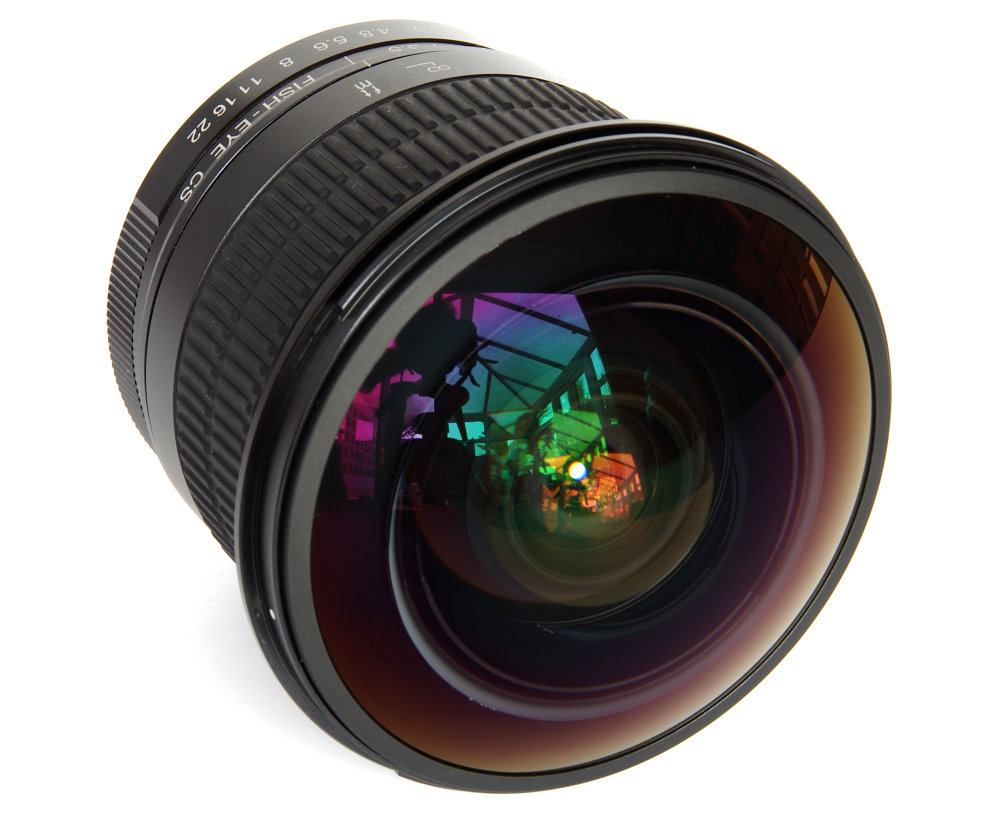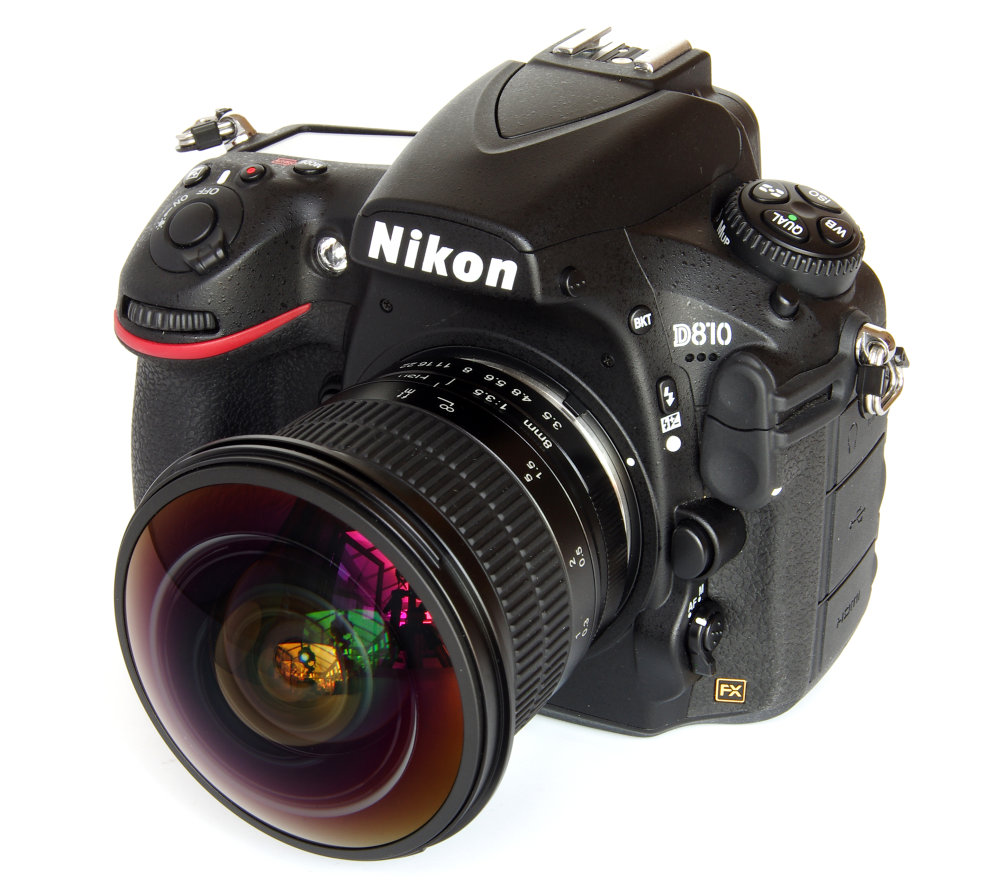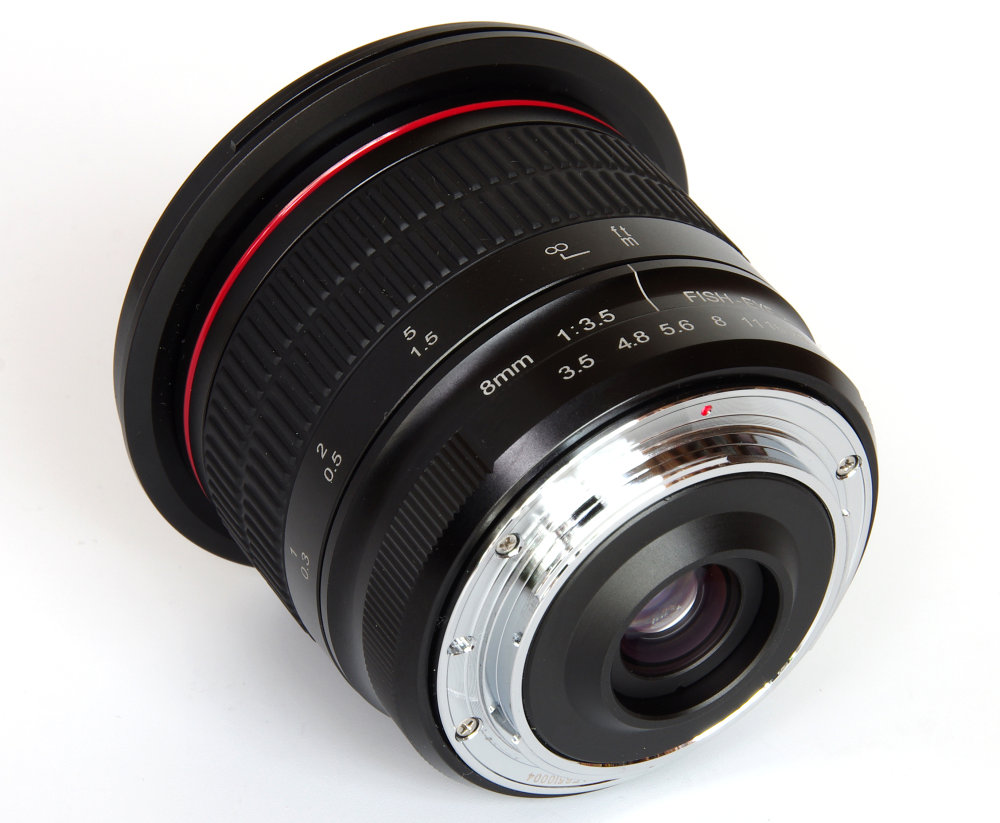Meike 8mm f/3.5 Fisheye Lens Review
Meike 8mm f/3.5 Fisheye Handling and Features
The lens is quite heavy for its modest size, weighing in at 519g, and no doubt the 11 element in 8 groups optical construction adds much of that weight in glass. The front element is domed and potentially vulnerable to damage, so use of the removable lens hood would be highly desirable. Unfortunately, in the sample received at least, the lens hood is a very poor fit and will not lock home in the correct position. This is particularly unfortunate with a very wide fisheye lens that goes beyond the usual 180 degrees and actually gives 200 degrees diagonal coverage as the edges of the hood can easily intrude on the image area. Equally, unfortunately, the large plastic lens cap needs to be fitted on to the hood to be used. Interestingly, video reviews on the internet show the lens being used without the hood in place, which is how I opted to proceed.
There is no possibility of adding filters to a lens as wide as this, so moving backwards we next find the wide and comfortable focusing ring. Focusing on a DSLR like the Nikon D810 is well nigh impossible as there is so much depth of field that the point of sharp focus cannot be judged. This is not a problem that is limited to the Meike lens however, but more a characteristic of manual focus fisheye lenses in general. The optical viewfinder, of course, shows the full frame 35mm-format image, and here the Meike 8mm fisheye shows a cut off circular image. Other formats can be selected on the Nikon and the APS-C crop gives a full image without cut off. Here the Live View is superior as it shows the correct field of view without the extraneous bits that the optical viewfinder reveals. This will also be true of the versions for Fuji X mount, Sony E mount and MFT cameras where the camera monitor or the EVF are used. Closest focus distance marked is a very close 0.1m, or 3.94 inches. The diaphragm consists of 9 blades, which offer a nicely circular aperture.
Further towards the mount, we find the aperture ring, very lightly click stopped and very smooth in action. There is no depth of field scale, but there are clear distance markings in feet and metres. There is an odd progression of apertures that goes from f/3.5 to f/4.8, but then from f/5.6 the marking follows normal convention through to f/22. The metal mount is well engineered and fits smoothly and snugly.
This is not the easiest lens to use, being even wider in its field of view than most fisheye lenses. Certainly, it takes some watching to ensure our own feet are not in the image. For ease of composition without distractions, an EVF or the camera monitor will show the most uncluttered view or the optical viewfinder of an APS-C format DSLR. The full frame DSLR shows a very untidy image field through the viewfinder. Oddly, the lens box claims this is a full frame lens, but it is clearly not.
If the advice to move close and then closer applies well to most ultra-wide lenses, then it applies even more so to the fisheye. Images can easily become predictable, so its use needs a bold sense of composition. Having said that, reasonably normal looking landscapes can be shot if the horizon falls in the centre of the field of view. Fisheye lenses once were very expensive and esoteric objects, but now they are easily within the budget of most photographers and are definitely a lot of fun to master.
Add your message
Please login here or if you've not registered, you can register here. Registering is safe, quick and free.
photodo Stats
428 MTF tests
74 in-depth photodo reviews
100+ users join each day
Help the lens community by reviewing or rating a lens today via our lens search
Latest Lens Reviews
- Chinon 28mm f/2.8 Vintage Lens Review
- Canon EF 70-200mm f/4L IS II USM Lens Review
- Samyang AF 85mm f/1.4 EF Review
- Sigma 70mm f/2.8 DG Macro Art Review
- Samyang AF 24mm f/2.8 FE Review
- Meike 50mm f/1.7 Review
- Tamron 70-210mm f/4 Di VC USD Review
- Lensbaby Burnside 35mm f/2.8 Review
- Asahi Super Takumar 50mm f/1.4 Review
- Asahi Super-Multi-Coated Takumar 135mm f/3.5 Review



